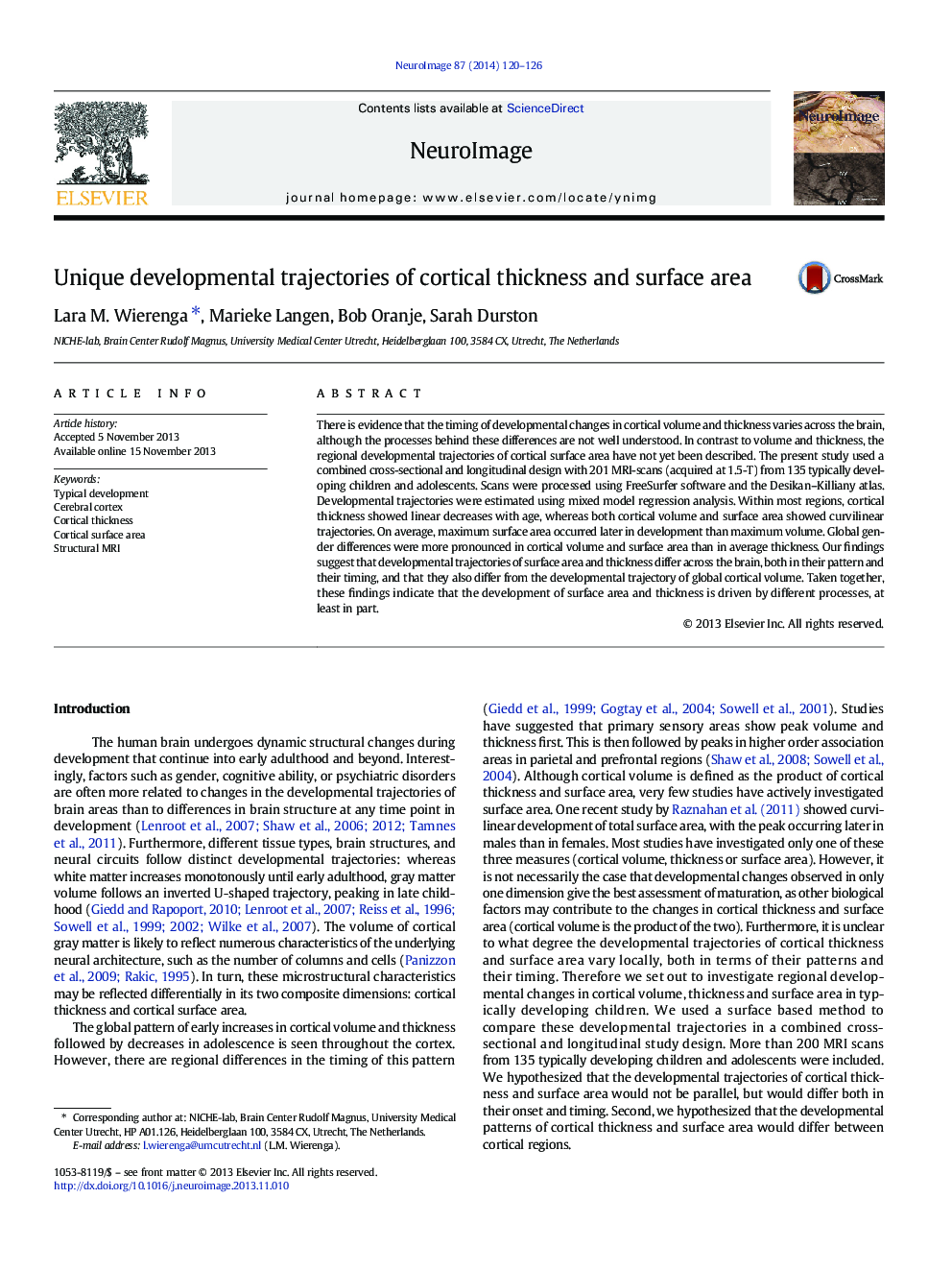| Article ID | Journal | Published Year | Pages | File Type |
|---|---|---|---|---|
| 6027890 | NeuroImage | 2014 | 7 Pages |
Abstract
There is evidence that the timing of developmental changes in cortical volume and thickness varies across the brain, although the processes behind these differences are not well understood. In contrast to volume and thickness, the regional developmental trajectories of cortical surface area have not yet been described. The present study used a combined cross-sectional and longitudinal design with 201 MRI-scans (acquired at 1.5-T) from 135 typically developing children and adolescents. Scans were processed using FreeSurfer software and the Desikan-Killiany atlas. Developmental trajectories were estimated using mixed model regression analysis. Within most regions, cortical thickness showed linear decreases with age, whereas both cortical volume and surface area showed curvilinear trajectories. On average, maximum surface area occurred later in development than maximum volume. Global gender differences were more pronounced in cortical volume and surface area than in average thickness. Our findings suggest that developmental trajectories of surface area and thickness differ across the brain, both in their pattern and their timing, and that they also differ from the developmental trajectory of global cortical volume. Taken together, these findings indicate that the development of surface area and thickness is driven by different processes, at least in part.
Related Topics
Life Sciences
Neuroscience
Cognitive Neuroscience
Authors
Lara M. Wierenga, Marieke Langen, Bob Oranje, Sarah Durston,
